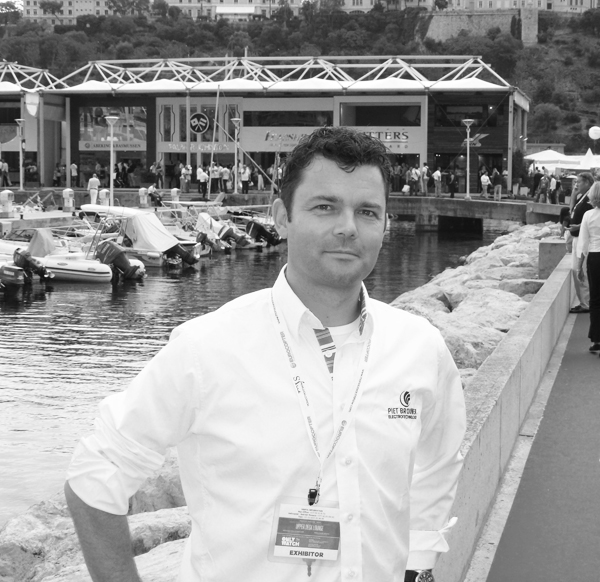The practical approach
Electrical service manager Piet Roskam calls for a closer look at the basics of a design to ensure the maintenance and upkeep of a vessel can be carried out.…
We often hear of the importance for designers to take into consideration the operational side of a vessel, such as the ease of washing down the exterior or providing enough space in the garage to safely launch and retrieve a tender. However, there is also a need for designers to consider the servicing of a yacht. As marine electrical service manager at Piet Brouwer Elektrotechniek Piet Roskam points out, practicality is crucial for the maintenance and upkeep of a vessel.
I have the privilege of working on some of the most beautiful yachts with stunning interiors. However, these magical floating dreams are not always easy to service and maintain. There are three main, yet separate parts to a yacht — the exterior, machinery and interior. Unfortunately these don’t seem to merge well and often stay as distinct sections after delivery. It’s surprising that a yacht project starts with an exterior and interior design brief but when it comes to the machinery, the design brief is rather poor if not non-existent.
Most engineers are free to design this aspect of the yacht in a way that they believe is good for the yacht and its crew. They work with other teams and technical departments to ensure everything operates as it should. It is therefore not surprising to see overheated technicians, working hard to merge all the various systems together. This is often witnessed by nervous interior builders, who are overseen by project managers that need to satisfy the various stakeholders and finish the project on time.
It is then up to the engineer on board and the service engineers to keep this all up and running without disturbing the well-being of those on board, which is not always simple. For instance, I was once called by an engineer who had an issue with the on board fire detection system on a client’s yacht. He needed to access a particular control box but couldn’t find it, as the control cable that led to it disappeared within the interior somewhere. After five days of searching for this unit, he called us for assistance, but I was not able to help him either. So I sent out a general message to my contacts, and got a reply from one of the members of the tech team that had worked on the project. It turned out that the control box was concealed underneath a wine glass cabinet. To access it we had to remove all the glasses and parts of the cabinet, just to reach it.
While this is quite an extreme case, new thinking is needed to avoid the repetition of such installations. Putting a switchboard underneath the owners bed or in the ceiling above the owner’s shower is not practical. One day a breaker will trip, and most likely when the owner is on board, and then you’ll need to wake him and his wife because of a faulty system. I would imagine that there are many engineers with similar stories, which are amusing over a beer at the dockside in Palma, but it is not at the time and especially when the owner is put out.
To better merge the systems on a yacht, we need to ask ourselves what is needed at the beginning of the design process and what scenario we want to avoid. Hiding an electrical installation is important, but do not forget that one day someone will need to access it, and it has to be easy for that person to get to it. When designing a new yacht it is important that an independent design team starts with the basics and outlines where the lines for all systems should go. These basics should result in a matrix that encompasses all systems, functions and their connections.
For example is an electric valve for the hydraulics a part of the electrical installation or of the hydraulic system, or maybe a part of the rigging, as it starts a winch? It is important to think, what is this piece for? Who does what? Where do we place it? How do we reach it? I’m not suggesting that designers need to think like an engineer, but rather as a team player that keeps the on board engineer and owner in mind. This will aid in the servicing and overall enjoyment of those on board for years to come.
Related Links:
Piet Brouwer
NEW: Sign up for SuperyachtNewsweek!
Get the latest weekly news, in-depth reports, intelligence, and strategic insights, delivered directly from The Superyacht Group's editors and market analysts.
Stay at the forefront of the superyacht industry with SuperyachtNewsweek
Click here to become part of The Superyacht Group community, and join us in our mission to make this industry accessible to all, and prosperous for the long-term. We are offering access to the superyacht industry’s most comprehensive and longstanding archive of business-critical information, as well as a comprehensive, real-time superyacht fleet database, for just £10 per month, because we are One Industry with One Mission. Sign up here.
NEW: Sign up for
SuperyachtNewsweek!
Get the latest weekly news, in-depth reports, intelligence, and strategic insights, delivered directly from The Superyacht Group's editors and market analysts.
Stay at the forefront of the superyacht industry with SuperyachtNewsweek




